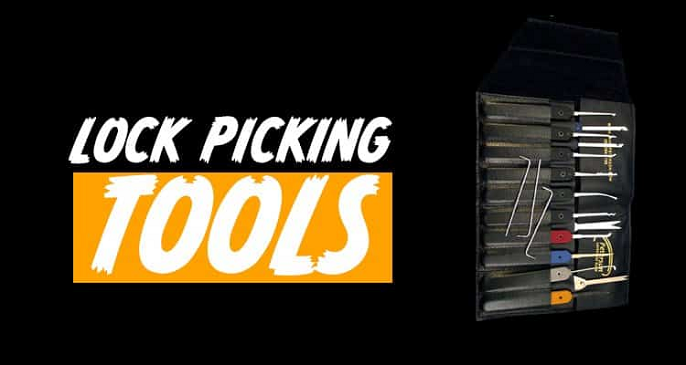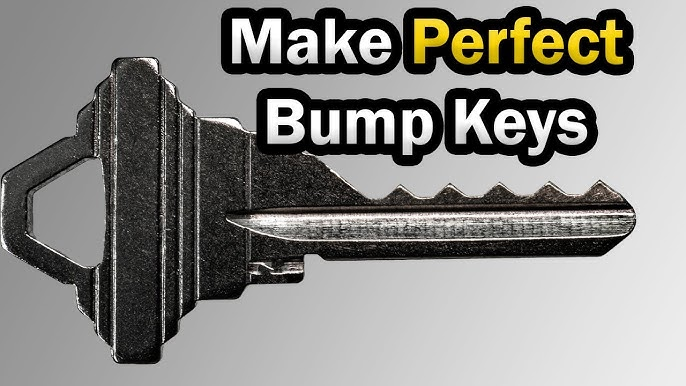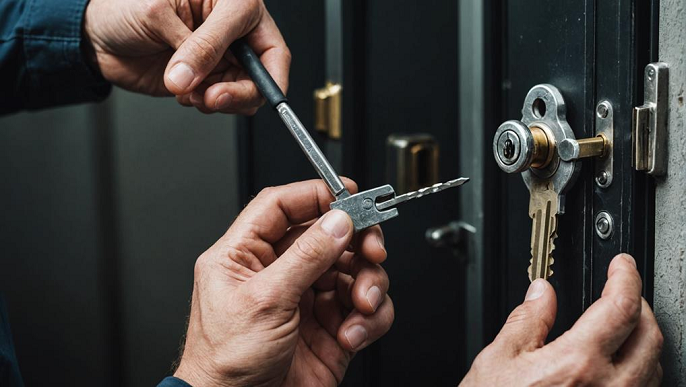How Locksmithing Techniques, Tools, and Security Have Evolved
2024-12-25 08:44
Locksmithing is a skilled trade that involves the design, installation, maintenance, and repair of locks and security systems. It is a critical profession, as locks are central to maintaining safety and security in homes, businesses, and vehicles. Over the years, locksmiths have developed a range of techniques and tools to address the growing sophistication of lock systems. In this article, we’ll explore some common lockpicking techniques, essential tools used by locksmiths, and how they contribute to security.

Lockpicking Techniques
Lockpicking is a technique that involves manipulating a lock's internal components to open it without using a key. It’s often associated with locksmithing but can also be a skill used by hobbyists, security professionals, or individuals who have locked themselves out of their property. The most common lockpicking methods include:
1. Single Pin Picking (SPP): This is one of the most precise techniques and involves picking each pin inside the lock one at a time. Locksmiths use a tension wrench to apply slight rotational pressure on the lock, while a pick is used to push up the individual pins. When each pin reaches the correct height, the lock will open.
2. Raking: Raking is a faster method for working with all the pins at once. It involves inserting a rake—a tool with a jagged edge—into the keyway and quickly moving it up and down while applying tension to the lock. This technique is less precise than single pin picking but can be effective for locks that aren’t high-security.
3. Bumping: Bumping is a technique that uses a specially crafted "bump key" to open a lock. By striking the bump key with a tool or hammer, the pins inside the lock are temporarily set to the correct position, allowing the lock to turn. While bumping can be effective, it’s a controversial technique as it can be used by individuals with malicious intent, though locksmiths use it in some instances to gain access to locked properties.
Bump Keys: A Double-Edged Sword
A bump key is a type of key that has been modified so that all the cuts are the same depth, making it the same height as the first pin in the lock. A bump key causes the pins to jump temporarily when it is put into a lock and whacked with a hammer or other blunt object. This brief movement can allow the lock to turn and open.
While bump keys are effective and are often used by locksmiths for legitimate purposes, they are also considered a security threat. Criminals can easily create or Buy Locksmith Set, using bump keys to gain unauthorized access to locks. As a result, many modern locks have been designed to be bump-proof, incorporating additional security features such as pin configurations that resist bumping or using advanced materials that make bumping difficult.

Lockpicking Gear: Essential Tools for Locksmiths
To successfully pick a lock, locksmiths require specialized gear. The most basic tools for lockpicking include the pick and tension wrench, both of which are essential for manipulating a lock’s internal components.
1. Pick: A pick is a thin, pointed tool used to manipulate the pins inside a lock. There are different types of picks, including hooks, rakes, and diamonds, each designed for a specific type of lock or lockpicking technique. The choice of pick depends on the lock's configuration and the skill level of the locksmith.
2. Tension Wrench: The tension wrench is another indispensable tool in lockpicking. It is used to apply rotational pressure to the lock cylinder while the pick manipulates the pins. The goal is to maintain the proper tension while moving the pins into place, allowing the lock to turn and open. Tension wrenches come in different shapes and sizes, each suited to a particular type of lock.
3. Bump Key Set: While not always used in standard lockpicking, a bump key set can be an important part of a locksmith’s toolkit. Locksmiths may use a bump key to quickly open a lock, but only when they have explicit permission to do so.
In addition to these basic tools, locksmiths often have a variety of other specialized Locksmith Equipment, such as key extractors, plug followers, and decoder tools, that help them with more complex tasks like key duplication, rekeying, and disassembling locks.
Security and Locksmithing: The Role of Locksmiths in Modern Security
Locksmithing is not just about picking locks—it’s also about enhancing security. Modern locksmiths play an essential role in designing and installing high-security locks, safes, and access control systems. These systems are crucial for both residential and commercial security, protecting unauthorized access and theft.
Many Locksmiths are also trained to install and maintain electronic security systems such as biometric scanners, keycard entry systems, and smart locks, which are becoming increasingly common in both home and business settings. These systems rely on more advanced technologies, such as fingerprint recognition or Bluetooth communication, to provide additional layers of security that traditional locks cannot match.
Furthermore, locksmiths often provide consulting services to help businesses and homeowners assess and improve their security. This may include recommending the installation of more secure locks, reinforcing doors and windows, or suggesting other protective measures, such as security cameras or alarm systems.

Conclusion
Locksmithing is a complex and multifaceted trade that requires a combination of technical expertise, problem-solving skills, and knowledge of security systems. Whether it's through traditional lockpicking techniques like single pin picking and raking or the use of advanced tools like bump keys and tension wrenches, locksmiths continue to adapt to new challenges posed by evolving security needs. As technology advances, so does the role of the locksmith, ensuring that individuals and businesses remain protected against threats. Whether securing a home, office, or vehicle, the work of a skilled locksmith is essential to keeping people safe and secure.

 Like Us on Facebook to enjoy 5% discount
Like Us on Facebook to enjoy 5% discount